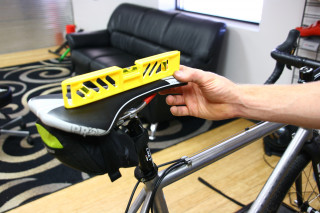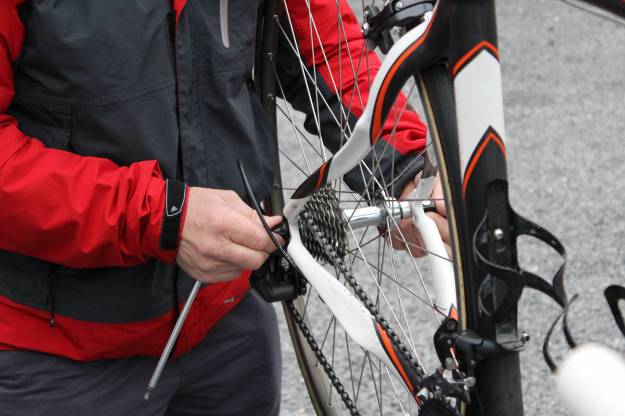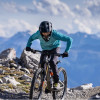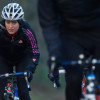Todd Carver co-founded Retül in 2007 and has used his background in competitive bike racing, 3-D motion capture expertise and in-depth knowledge of biomechanics to become one of the most respected bike fit experts in the world.
Retül technology is used by more than 700 bike fitters globally and Retül is also used as the official bike fit technology of the Great Britain Cycling Team and Team Sky. We’re privileged to have Todd onboard as a resident expert and to be able to pass along bike fitting tips to you.
For riders that are not going to get a full fit on their bicycle (old or new) there are some simple techniques that can be done at home to determine a solid neutral riding position. It’s important to remember that this position will provide a starting point from which individual riders can adapt and evolve their fit. If you have any injury concerns or find the position obtained from this fit uncomfortable, a professional bike fit is recommended.
The tools that are needed are:
Stationary trainer (turbo)
front wheel block
Four foot spirit level (or tape measure)
Metric allen keys
Felt tip marker or stickers.
Setup
The setup is very important for accuracy of these techniques. Basically, you need to get the bike stationary, stable, level to the horizon and vertically straight (not leaning to one side or another as you sit on it).
1. Pump up your tyres to recommended pressure.
2. Replace the bicycle’s rear skewer with the one that comes with the trainer. This will ensure that the bike is fairly vertical and does not lean to a side. This is also a safety issue.
3. Set bike in trainer according to manufacturer recommendations
4. Place the front wheel block under the front wheel so the bike is level to the horizon. The best way to do this is to place one end of a four foot spirit level in the middle of the rear axle (now affixed in the trainer) and extend the other end towards the front axle. Then adjust the front wheel height until the axles are level.
5. Visually inspect the bike to see that it is vertical (not leaning laterally)
6. Adjust saddle angle so that the front two-thirds of the saddle is level to the ground. For shaped or anatomical saddles, this means that the rear of the saddle will actually rise above the front of the saddle for proper sit bone support and provide relief to the anterior soft tissue of the genitalia.
Word of warning, within reason this saddle angle is subject to personal preference and some small amount of variability between brands.

7. Set handlebar rotation and grip angle to facilitate comfort in all positions of handlebars. For road-style handlebars, the main portion of the grip (or hood) should be angled slightly upwards to facilitate a neutral wrist angle when riding. Then make sure you can reach your brake levers comfortably from both the hoods and the drop portion of the handlebar.
8. Stems are usually able to be positioned either up or down. Start with the stem angled downward. Most stems are +/- 6⁰ to +/- 20⁰
9. If adjustment of the stem height (up and down) is available with headset spacers, place all but one spacer under the stem and the other remaining spacer above the stem. Then thread the headset adjustment bolt on top of that last spacer and tighten the headset/stem system according to manufacturer recommendations.
10. Kit up with whatever you wear when you ride.
Making adjustments to contact points
Foot position
A good starting cleat setting is one that positions the ball of the foot on the pedal spindle. To accomplish this task, watch our video on cleat set up.
Saddle height
You will now set the saddle height by adjusting the seatpost in and out of the frame.
1. Set the saddle in the middle of the rails for fore/aft positioning.
2. Then set the saddle height at the low end of the available range.
3. Mount the bike.
4. Sit squarely on the saddle and hang both feet straight downward with both knees fully extended.

5. Adjust saddle height higher until your heel barely scrapes the pedal at the bottom of the pedal stroke with the knee fully extended.

Handlebar position
You will now set the handlebar height and fore/aft. It is best to set the height first, then adjust the stem for length.
1. Place the 4 foot spirit level on the middle of the saddle and extend it outwards over the top of the handlebar.

2. For a competitive or racing road bike position, the top of the handlebar should be at least a full fist width below the mid-point of the saddle (most fists are about 8cm)
3. For a performance road position, the top of the handlebar should be about 5-6 cm below the mid-point of the saddle.
4. For a recreational road bike position, the top of the handlebar should be level with the mid-point of the saddle, or maybe a couple of centimetres below.
5. For a cross country MTB position, the grip should not be above the mid-point of the saddle.
6. For aggressive cross country MTBing, the saddle to grip drop should be in the range of 2-5 cm.
7. Remember, most stems are able to be flipped upwards. So if you cannot get your bars high enough with the headset spacers, you can flip your stem upwards.
8. Once you have set the bar height, mount the bike and ride with your hands positioned at all of the contact points of the handlebar.
9. Adjust stem length and fine tune bar height to arrive at your desired position.
10. A good tip is to start with the bars higher and with a shorter reach with respect to the saddle. Then go for a lower and longer position as you desire more speed and as your body adapts.















